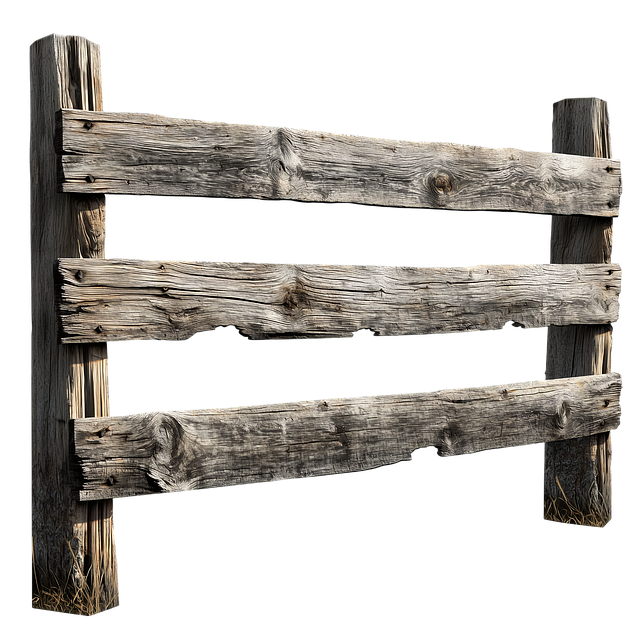In the face of coastal environments’ unique challenges, durable wooden fencing emerges as a reliable and aesthetically pleasing solution. This article delves into the intricacies of selecting and maintaining fencing materials suited for salty air and extreme weather conditions. We explore the benefits of high-durability wood species, installation techniques designed to withstand the elements, and essential maintenance tips. Additionally, we offer creative design ideas, transforming coastal fences from functional barriers into stunning landscapes that enhance coastal living.
- Understanding Coastal Environment Challenges for Fencing
- Benefits of Durable Wooden Fencing Materials
- Choosing the Right Wood Species for Coastal Conditions
- Installation Techniques for Longevity in Salty Air
- Maintenance Tips to Extend Fence Lifespan
- Design Ideas for Stunning Coastal Fences
Understanding Coastal Environment Challenges for Fencing
The coastal environment presents unique challenges when it comes to installing and maintaining fencing. Saltwater corrosion, strong winds, and frequent rainfall can significantly impact traditional fence materials. Wooden fences, in particular, require special consideration due to their susceptibility to moisture and elements found along the coast. The harsh marine climate demands durable, weather-resistant options that can withstand these conditions without compromising aesthetics or functionality.
Understanding these challenges is crucial for selecting appropriate fencing solutions. Durable wooden fencing for coastal areas should be crafted from rot-resistant woods like cedar or treated with protective coatings to enhance resistance against corrosion and decay. Proper installation techniques, including elevated posts and secure fastenings, further ensure the longevity of these fences in such demanding environments.
Benefits of Durable Wooden Fencing Materials
Durable wooden fencing materials offer an appealing and functional solution for coastal areas, where traditional fences often face challenges from harsh weather conditions. One of the primary benefits is their ability to withstand the elements, including strong winds, salt air, and frequent rainfall. Treated wood, such as pressure-treated or cedar, is highly resistant to rot, mold, and insect damage, ensuring the fence remains sturdy and structurally sound over an extended period.
These fencing materials also contribute to a more aesthetically pleasing landscape. Wooden fences provide a natural look and feel that complements coastal homes and properties. They can be customized with various styles, colors, and finishes, allowing homeowners to express their unique tastes while enhancing curb appeal. Additionally, durable wooden fences require minimal maintenance compared to other materials, saving time and money in the long run.
Choosing the Right Wood Species for Coastal Conditions
When selecting wood for coastal fencing, understanding its interaction with salt air and varying climates is key to ensuring longevity. Certain tree species are naturally more resistant to decay, insects, and weather extremes. For instance, cedar and redwood are renowned for their durability due to high natural oil content which repels water and prevents pest infestation. These woods also have a lower risk of warping or cracking in coastal environments.
Considered an excellent choice for coastal areas, treated pine is another option that offers affordability and strength. Pressure-treated wood is infused with preservatives that enhance its resistance to rot, making it suitable for outdoor applications. However, it’s important to regularly maintain this type of fencing to ensure its long-lasting performance in salty environments.
Installation Techniques for Longevity in Salty Air
When installing wooden fencing in coastal areas, special consideration must be given to the unique challenges posed by salty air. The first step is to choose a wood species that can withstand moisture and salt content. Treated or naturally durable woods like cedar, redwood, or tropical hardwoods are ideal. Proper installation techniques further enhance longevity. This includes using stainless steel hardware instead of rust-prone options, ensuring adequate drainage by installing the fence on a slightly inclined surface, and applying regular protective coatings to shield the wood from corrosive elements.
An additional crucial step is to seal all joints and exposed surfaces with high-quality outdoor sealants. These sealants create a barrier that prevents salt water and moisture from seeping into the wood’s pores. Regular inspection and maintenance are also vital. Keep an eye out for any signs of damage or rot, addressing them promptly to prevent widespread deterioration. By combining these methods, you can ensure your coastal wooden fence not only withstands the salty air but remains sturdy and attractive for years to come.
Maintenance Tips to Extend Fence Lifespan
To ensure your durable wooden fence stands the test of time, especially in coastal areas exposed to salt air and varying weather conditions, proper maintenance is key. Regular cleaning is a must, removing any sand, salt, or debris that may accumulate on the fence’s surface. Use a soft-bristled brush and mild detergent for this task.
Repainting or sealing the wood annually will also protect it from moisture and UV rays. Apply a high-quality water-repellent stain or paint designed for exterior use, ensuring it is suitable for coastal environments. This step is crucial to prevent rot and maintain the fence’s aesthetic appeal.
Design Ideas for Stunning Coastal Fences
When designing fences for coastal areas, it’s crucial to embrace the beauty of the natural environment while ensuring durability against harsh conditions like saltwater exposure and strong winds. Creative design ideas can transform a simple barrier into an eye-catching feature that enhances the landscape. Incorporate organic elements such as curved lines mimicking the waves or boards arranged in a mosaic pattern inspired by coastal rocks. Natural textures like rough-sawn wood or woven ropes can add depth and character, creating a unique fence that blends seamlessly with its surroundings.
Color choices should also reflect the coastal theme. Soft neutrals like beige or grayish-blue hues mimic the sky and sea, while accents of vibrant greens or blues from nearby vegetation can create a striking contrast. Consider incorporating decorative elements like carved wooden panels depicting marine life or intricate latticework to add visual interest without compromising structural integrity. These design considerations not only make your fence aesthetically pleasing but also ensure it stands the test of time in the challenging coastal environment.
